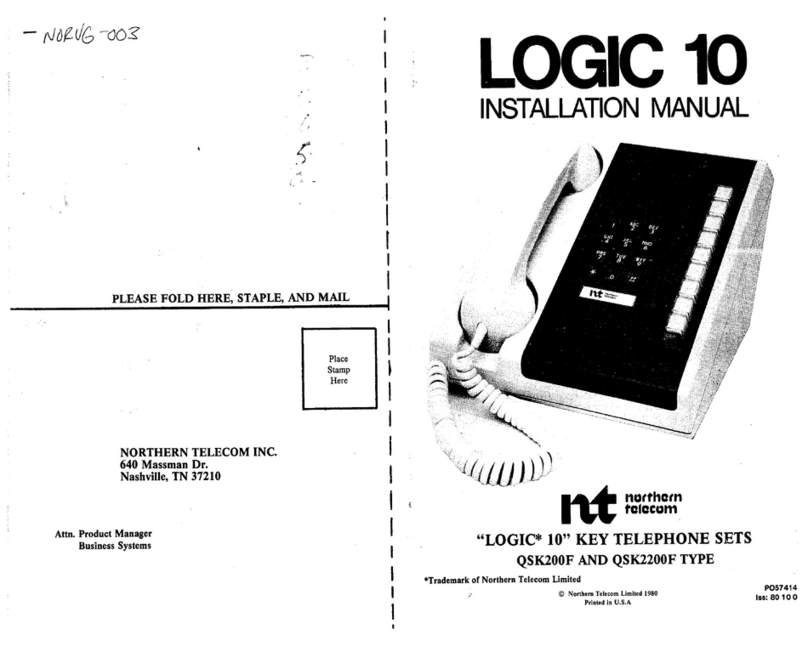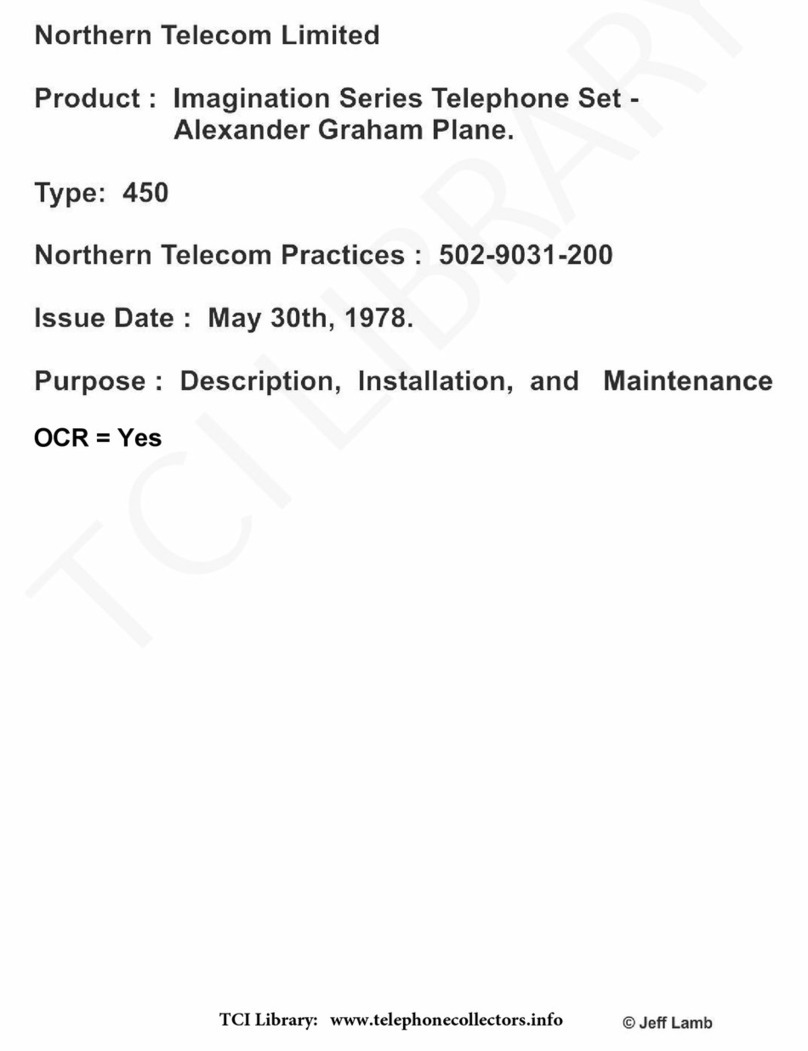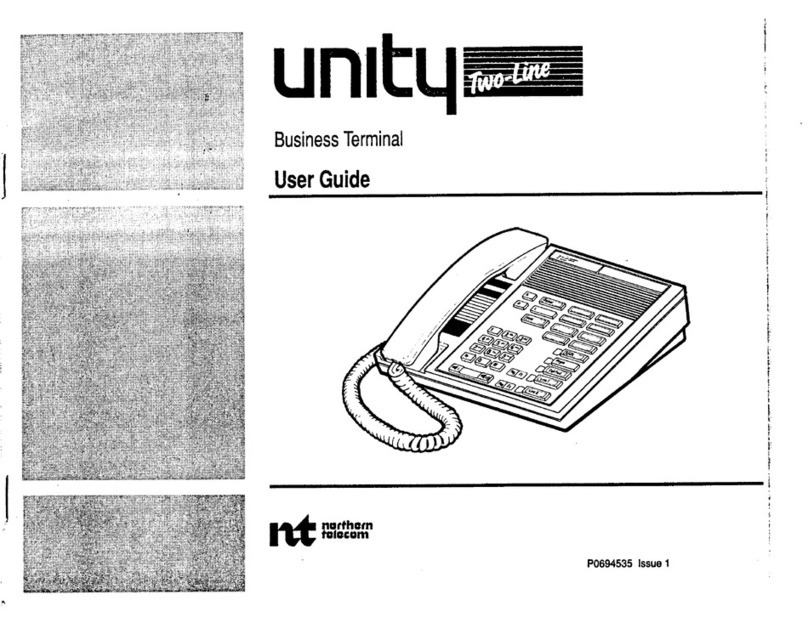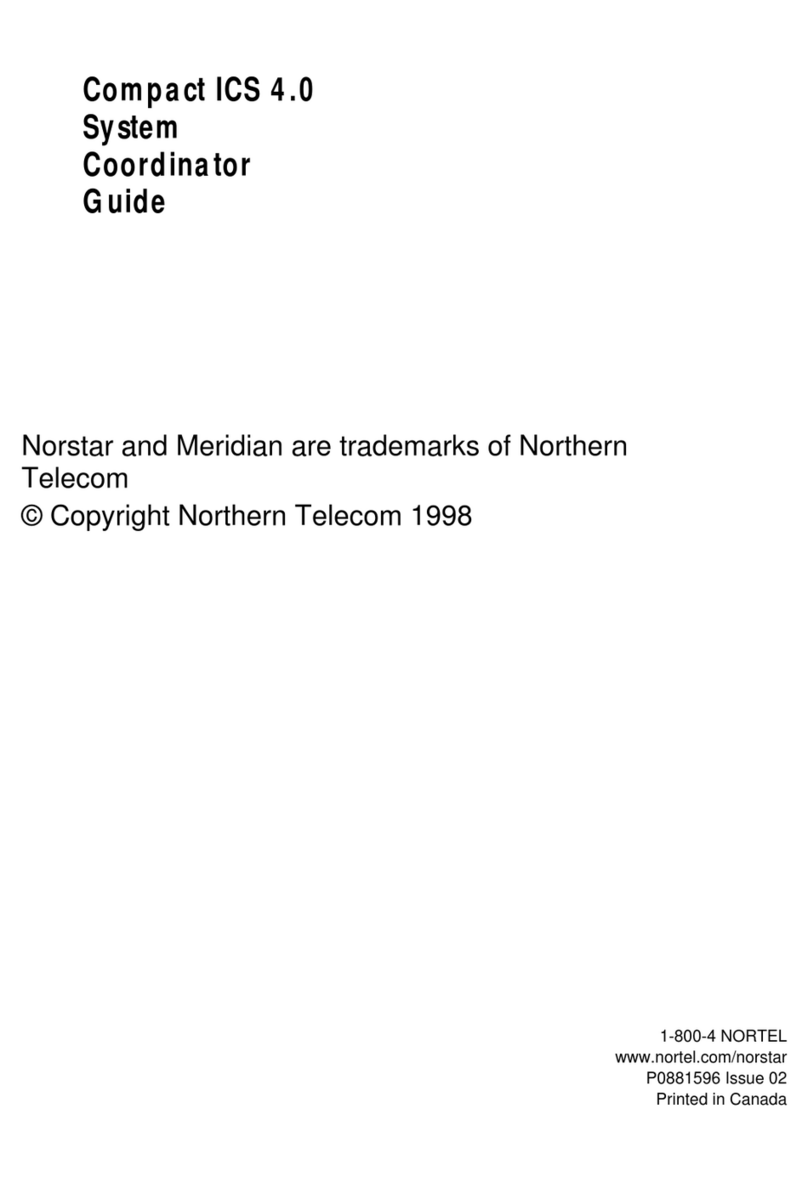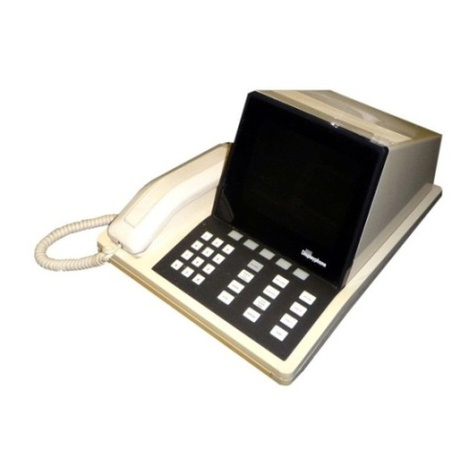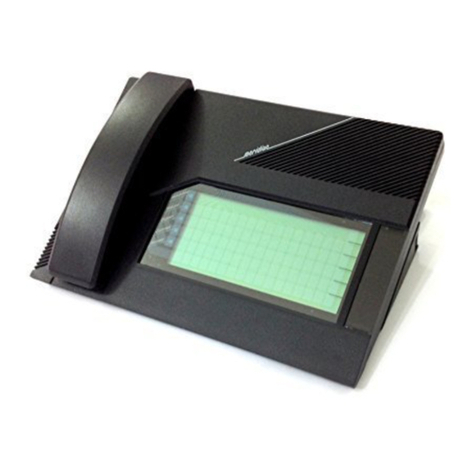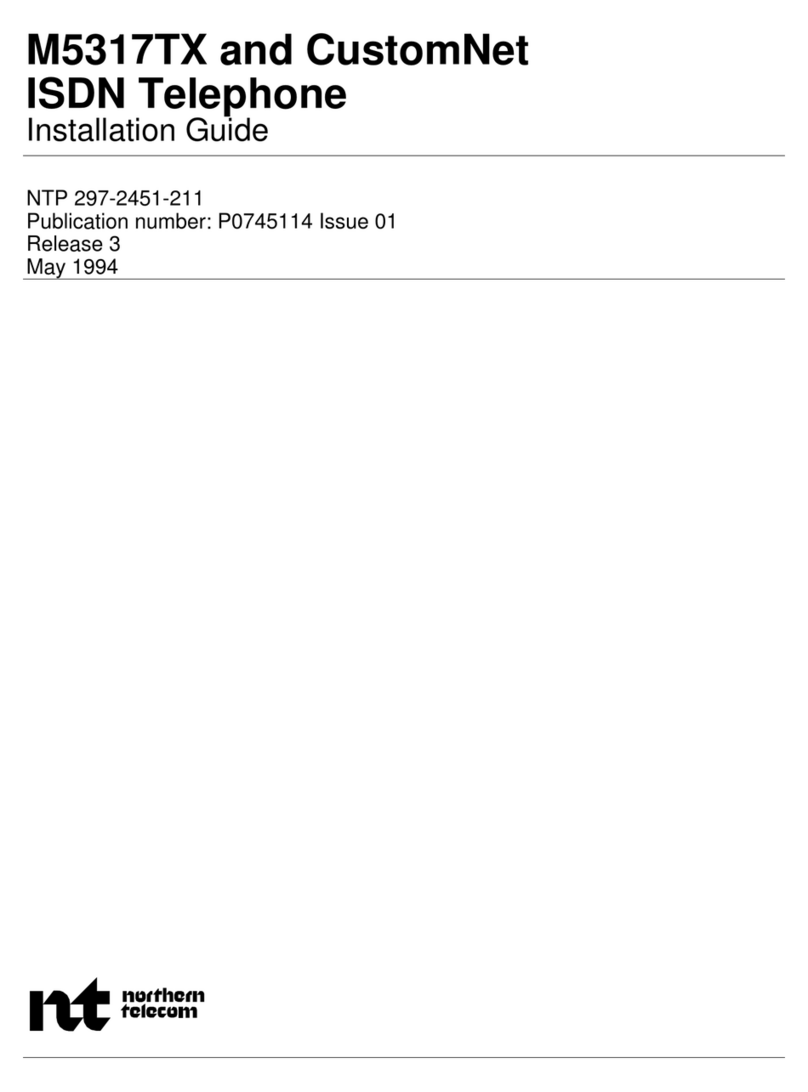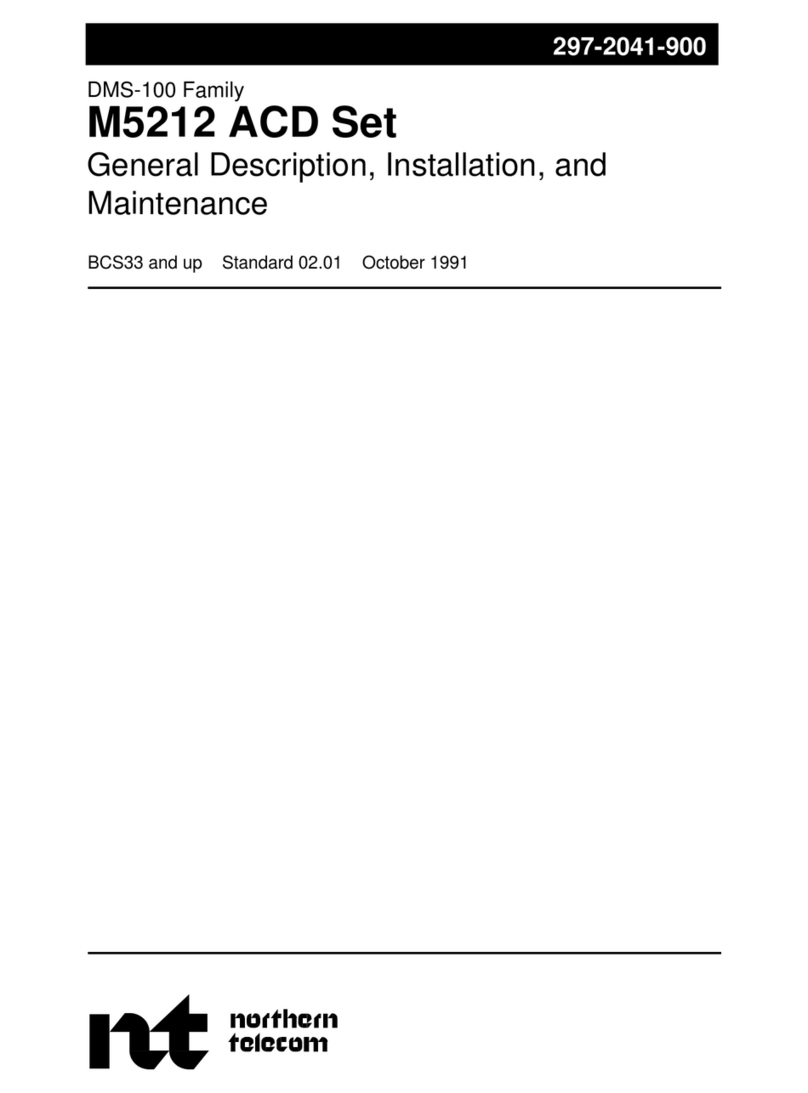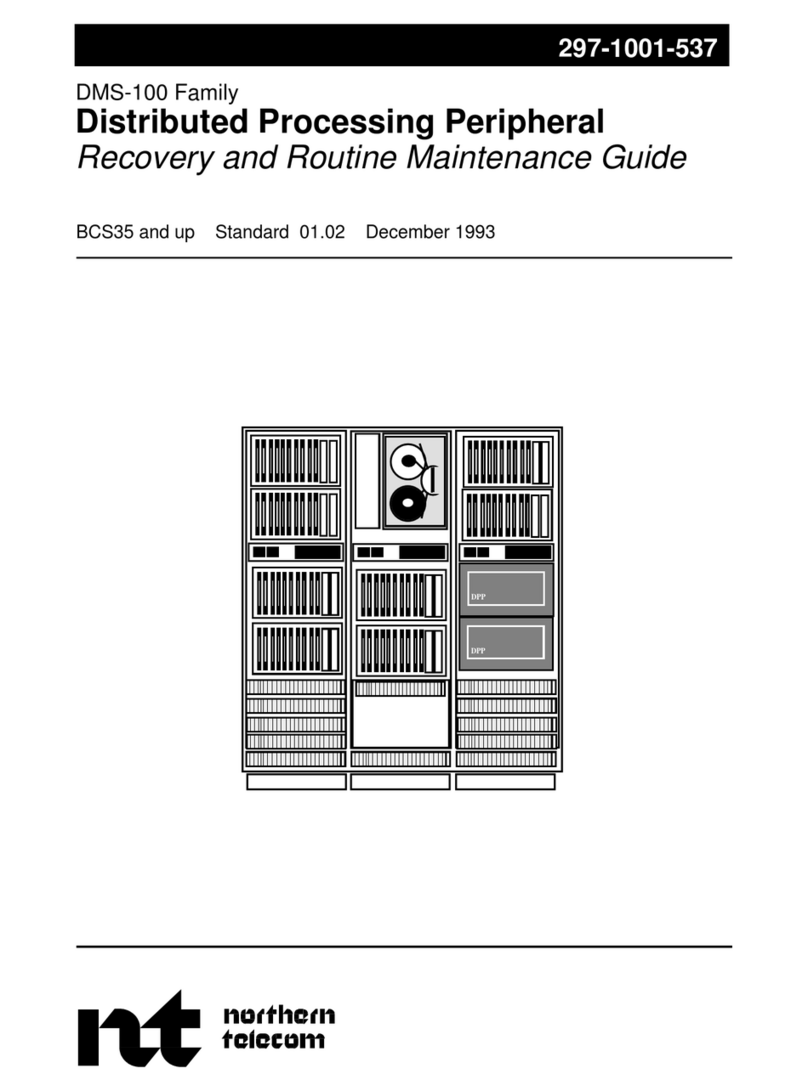
(E Continental Telephone System Practice
Plant Series 480-101-401
Issue 2, 1976
Page 1
QSK100 AND 2100 TYPECONTEMPRATELEPHONESET
INSTALLATIONAND MAINTENANCE
CONTENTS
GENERAL
DESCRIPTION
IDENTIFICATION
INSTALLATION
MAINTENANCE
1. GENERAL
PARAGRAPH
1
2
3
4
5
1.01 This practice provides the description,
installation, and maintenance information for the
QSKlO0 and 2100 Type Contempra telephone sets.
1.02 This practice is reissued to update information
on the Contempra sets. Because of the extensive
additions, the location of these additions isnot noted
throughout this practice. Remove from the file and
destroy all copies of CTSP480-101-401, Issue 1,
1969.
2. DESCRIPTION
2.01 The Contempra is a two-piece telephone set
(Figure 1)consisting of base and handset, and is a
combined desk-wall-type telephone. Wheri used as a
desk-type telephone, it rests on the feet provided in
the base of the set. When used as a wall-type set, it is
mounted by using the mounting holes in the
baseplate.
2.02 When the Contempra telephone set is used as
a desk set, and the handset is in place, it rests in the
recess provided in the base of the set.. When the
Conlempra telephone is used as a wall set and the
handset is in place, the lower edge of that portion of
the handset that houses the receiver unit engages a
projection provided as part of the handset recess.
2.03 The transmission circuit isthe same as for o 500
type telephone set.
2.04 The QSK100 type telephone sets are equipped
with a NE-l0QA rotary dial (exceptQSKlOOCwhich
has no dial), while the QSK2100 type telephone sets
are equipped with a QDC1A Digitone dial.
2.05 The QSKl00A and 2100A telephone sets are
single-line telephone sets equipped with rotary and
Digitone dials respectively (Figures 1 and 2).
2.06 The QSKlO0B and 2100B are the rotary and
Digitone dial versions of the "Message Waiting"
telephone sets (Figure 3).
2.07 The QSKlOOCis the "manual" version of the
QSKlOOAand no dial is required (Figure 4).
2.08 The QSK191A and 219A telephone sets are
similar lo the QSKlOOA and 2100A single-line sets
except that they are not equipped with a ringer;
instead, they have a mounting bracket mounted in
place of the ringer, which may be used to mount a
frequency selective type ringer.
FIGURE 1. Desk Mounted "Off-Hook" Position
(foldout)· for circled number identification.
FIGURE 2. Desk Mounted "Off-Hook" Position
Distribution IV (D'
